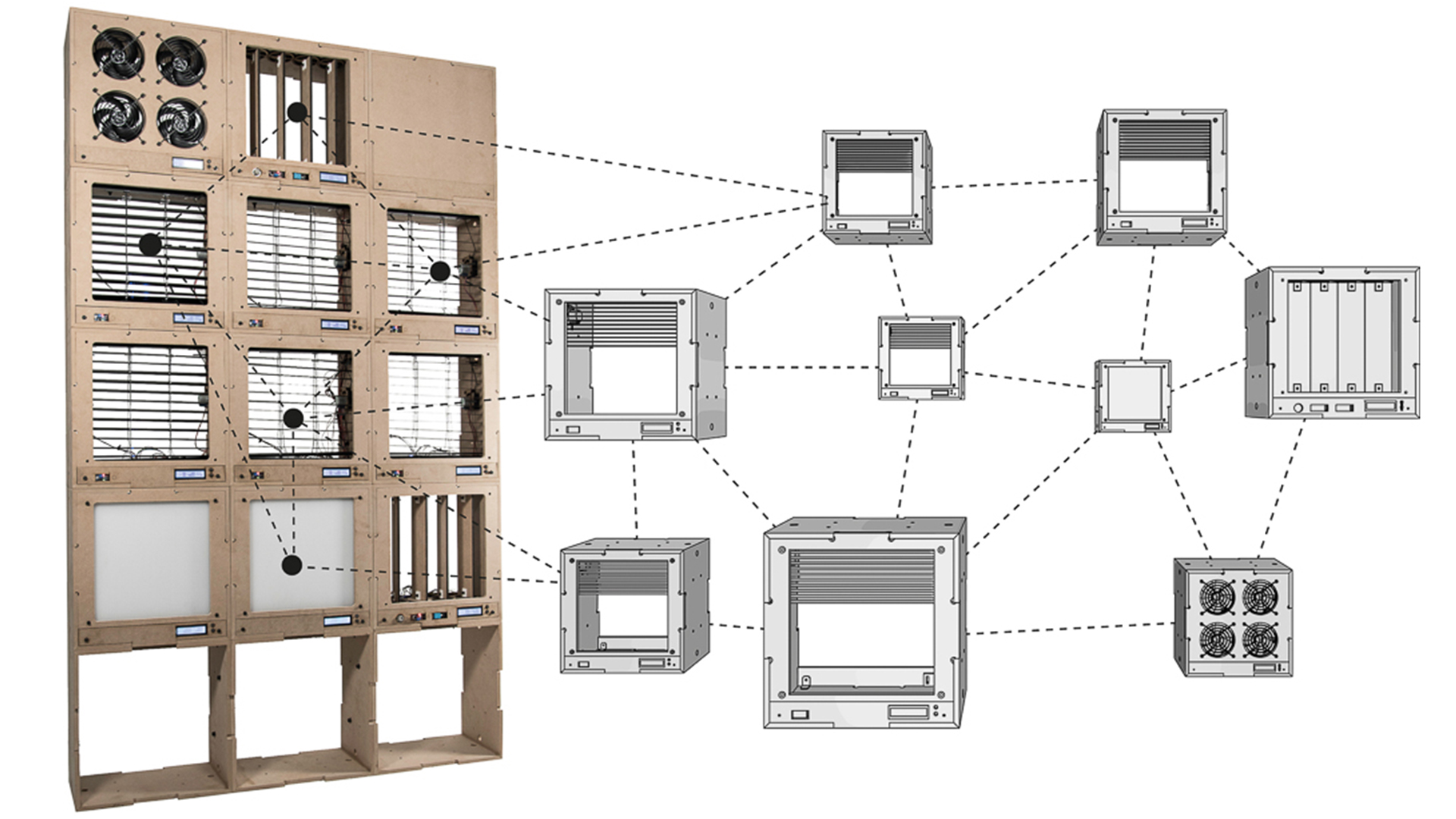Although a façade can be understood as the skin of a building, contrary to the biological role model, today’s façade systems do not react as holistic organisms to external stimuli. In his PhD research, Jens Böke establishes a conceptual framework for so-called cyber-physical façades, paving the way for a new generation of intelligent façades: ThinkingSkins.
Within the research, Böke identifies possibly adaptive and performance-relevant functions as constituents of such cyber-physical systems, and investigates current pre-conditions in building practice. A prototype provides a reference architecture and demonstrates the potential for the coordination of façade functions.
There are already adaptive façades with applied automations in existence. Such façades can for instance automatically lower and raise the sun blinds, or open and close the windows in reaction to climatic conditions. However, these are usually hierarchically organised and centrally controlled. Holistic adaptive systems would respond as a whole to the various stimuli from their environment, but are still hard to be found. This is a missed optimization potential, because intelligent coordination between automated façade functions can contribute to the energetic performance and the provided interior comfort of buildings. “We still understand our built environment primarily as the static product of design processes. Current digitalization and increasing automation require a new understanding of buildings themselves as dynamic processes,” says Böke. “My vision is to enable façades with well-coordinated adaptive measures. The guiding concept of a ThinkingSkin reflects the idea of autonomous operation based on the processing of extensive collected environmental information.”
The major challenge lies in the interplay of various façade functions. These are sometimes supporting, and sometimes contradicting each other. How can façade functions react as a whole to changing conditions and requirements? Böke sees a solution in decentrally organised cyber-physical systems. These are characterised by the close integration of the physical components with their digital control on the cyber level. Such systems are already becoming implemented in many application fields. Examples are autonomous driving in the transportation sector, smart surgery in medicine, and smart energy grids. In industry, cyber-physical systems lead to a new development stage called Industry 4.0, which achieves a higher flexibility and productivity by the networking and cooperation of individual production plants. Böke: “The building sector is a bit slower, but my research shows comparable promising application possibilities of cyber-physical systems to façades.”
The prototype shows the promising possibilities clearly. It comprises eleven modules, representing the façade functions: natural- and mechanical ventilation, sun shading, and heating and cooling. Each module is equipped with a number of sensors that collect information about the environment. They measure, for example, light intensity, sound, CO2, temperature, humidity, and register the presence of possible users. Gathered information is processed locally in feedback loops by NodeMcu microcontrollers and exchanged throughout the system via the MQTT communication protocol. The communication enables the coordinated reactions of the system, finally initiated by integrated actuators and physical devices. Computer fans illustrate the mechanical ventilation, motorized sun blinds demonstrate solar shading, and coloured LEDs indicate heating or cooling. All implemented façade functions are connected to a ‘digital twin’ - an exact digital representation of the system that monitors all processes.

The prototype was tested towards different cooperation scenarios, in which individual façade functions supplement, inform or override each other. Although the simulation and measurement of the actual energetic contribution of such automation concepts was not yet part of the research project, the successful implementation of the prototype raises great expectations towards possible cyber-physical façades. In light of redundant sensors, micro-controllers and actuators might also contribute to the reliability of automations.
In retrospect of his project, Böke sees the application of cyber-physical systems as a first step towards the overreaching idea of ThinkingSkins. The foundation for further research is established by his PhD research. Böke: “In my perception, ThinkingSkins will reach a new degree of autonomy due to extensively applied artificial intelligence and machine learning abilities.” This might also lead to new ethical questions regarding possible roles between human interests and the operation of façades as intelligent machines.”
Published: June 2020
More information
- PhD thesis ‘ThinkingSkins. Cyber-physical systems as a foundation for intelligent adaptive facades’.
- PhD defence Jens Böke
